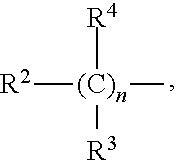Compositions for use against one or more pathogens
a technology of pathogens and compositions, applied in the field of compositions containing antagonistic microorganisms, can solve the problems of affecting the survival rate of pathogens, and affecting the survival rate of pathogens, and achieving the effects of reducing the risk of food poisoning, and reducing the production capacity of pathogens
- Summary
- Abstract
- Description
- Claims
- Application Information
AI Technical Summary
Benefits of technology
Problems solved by technology
Method used
Image
Examples
example 1
[0064]Salts and antagonistic microorganism encompassed in the composition of the present invention are listed in Tables 1 and 2.
[0065]
TABLE 1Salts1calcium sulphate2Ca(H2PO4)23CaHPO44Ca3(PO4)25CaCO36Ca(HCO3)27calcium acetate8calcium ethanoate9calcium glutamate10calcium glycerate11calcium erythronate12calcium theonate13calcium ribonate14calcium arabinoate15calcium xylonate16calcium lyxonate17calcium allonate18calcium altronate19calcium gluconate20calcium mannoate21calcium gulonate22calcium idonate23calcium galactonate24calcium talonate25calcium alloheptonate26calcium altroheptonate27calcium glucoheptonate28calcium mannoheptonate29calcium guloheptonate30calcium idoheptonate31calcium galactoheptonate32calcium taloheptonate33calcium tartronate34calcium malate35calcium tartrate36calcium citrate37calcium saccharate38calcium mucate39calcium lactogluconate40calcium ascorbate41calcium isocitrate42calcium citramalate
[0066]
TABLE 2Antagonistic microorganismaAgrobacterium radiobacterbBacillus sub...
example 2
[0070]Example 2 illustrates the fact that good protective effect may be obtained by using compositions of the invention comprising a salt as defined herein, such as calcium gluconate (CG) and antagonistic yeast's active against postharvest diseases caused by moulds on fruits of Malus species.
Vegetal Material
[0071]Apples (Malus domestica Borkh cv. Golden) were harvested from commercial orchards maintained with standard cultural practices in Belgium and placed in regular long term storage. Commercial class I fruits were used. They were bought from wholesale dealers and stored in a cold room at 4±1° C. for maximum 15 days before use.
Pathogens
[0072]Penicillium expansum (blue mould) strains were initially isolated from apples in Gembloux Belgium. Conidia from pathogen were put in suspension in a glycerol solution (25%) and stored at −70° C. Starting from this stored material, the fungal strain was transferred to PDA medium at 25° C. Conidial suspensions were prepared in an aqueous steril...
example 3
Vegetal Material
[0094]Apples (Malus domestica Borkh cv. Golden) are as described in Example 2.
Pathogens
[0095]Penicillium expansum as described in Example 2
Antagonistic Micro-Organisms
[0096]The antagonistic yeast strain was Candida oleophila as described in Example 2.
Treatment
[0097]The apples were wounded as described in Example 2 and treated by application of compositions comprising a salt according to the invention and 105 cfu C. oleophila, or compositions of the state of the art. The salts used were: calcium gluconate (CG), tricalcium citrate: (TC), calcium carbonate (CCa), calcium lactate (CL), calcium lactogluconate (CLG), calcium ascorbate (CA)
[0098]After incubation, the wounds were inoculated with Penicillum expansum. The fruits are further incubated. The diameters of the lesions developing around the wounds were measured after 7 days after inoculation of the pathogen. The percentage of protection provided by the different treatments was calculated as described in Example 2. T...
PUM
| Property | Measurement | Unit |
|---|---|---|
| concentration | aaaaa | aaaaa |
| concentration | aaaaa | aaaaa |
| diameter | aaaaa | aaaaa |
Abstract
Description
Claims
Application Information
 Login to View More
Login to View More - R&D
- Intellectual Property
- Life Sciences
- Materials
- Tech Scout
- Unparalleled Data Quality
- Higher Quality Content
- 60% Fewer Hallucinations
Browse by: Latest US Patents, China's latest patents, Technical Efficacy Thesaurus, Application Domain, Technology Topic, Popular Technical Reports.
© 2025 PatSnap. All rights reserved.Legal|Privacy policy|Modern Slavery Act Transparency Statement|Sitemap|About US| Contact US: help@patsnap.com



